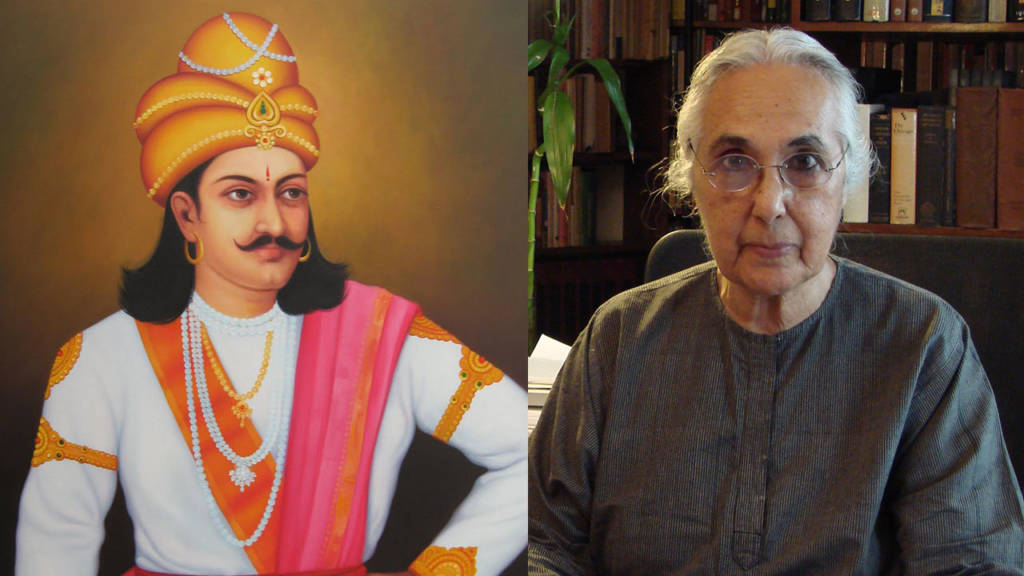A video of ‘Historian’ Romila Thapar has gone viral on social media. In the video, she said that Yudhishthira’s reluctance to be king and preference of renunciation, mentioned in Shantiparva- 18th chapter of Mahabharata was inspired by Samrat Ashoka, who also wanted to choose renunciation.
Mahabharata war happened around 3137 BC and King Ashoka’s time is 304 to 232 BCE, but, historian (😊) #RomilaThapar feels that Yudhishitira got this idea about renunciation from Ashoka! ( @Bharathgyan @sgurumurthy @madhukishwar @davidfrawleyved @rvaidya2000 @TVMohandasPai ) pic.twitter.com/lmViP1OxHX
— Swamiji (@AOLSwamiji) September 21, 2019
The video has gone viral, and Romila Thapar is being trolled endlessly. The users gave her lesson on historical timeline, and asked for the CV of the ‘Eminent Historian’. While she implies that Emperor Ashoka’s reign predated the Mahabharata, and gets ruthlessly trolled for the same- another important question that arises out of this episode is whether Emperor Ashoka ever considered the idea of renunciation, or had he turned pacifist after Kalinga war.
Well, historical records suggest Ashoka did not. Ashokavadana, the historical Buddhist text which is used to eulogize Ashoka says that he became King after he killed the crown prince Sushima, who was away fending off incursions on the north-western frontiers. To consolidate his claim on the throne, and quell any future uprising, he killed all male rivals of his family, including 99 half-brothers. Many court officials, who were not loyal to him, were also killed.
Renunciation was the last thought in a person’s mind who has won the throne after such mass scale bloodshed. He was popularly known as “Chandashoka” or Ashoka the Cruel; almost all Historical texts – Hindu and Buddhists, agree on that Ashoka was very cruel. He built a torture chamber which was known as Ashoka’s hell, burnt many men and women alive, and carried mass scale religious persecution.
Our history books, written by people who belong to ‘Romila Thapar School of History’ tell that- After the popular Kalinga war, Emperor Ashoka converted to Buddhism and became a pacifist. But the minor rock edicts suggest that he converted to Buddhism almost two years before the Kalinga war.
A person who has carried execution of family members, burnt people live, and has been in war for eight years (274BC- 262BC), suddenly turned ‘Pacifist’, according to Romila Thapar, after having had invaded the every last independent Kingdom in his geographical outreach. The Buddhist texts and Romila Thapar argue that after Kalinga war, Ashoka suddenly turned pacifist, but this claim is a hollow one.
Sanjeev Sanyal, author and historian, writes in his book Land of Seven Rivers, “The Pali text Ashoka-vadana, moreover, tells us of more acts of genocide perpetrated by the emperor many years after he supposedly turned pacifist.” “The Ashokavadana clearly tells us how an enraged Ashoka had 18,000 Ajivikas in Bengal put to death in a single episode. This is the first known instance of large-scale religious persecution in Indian history and sadly, would not be the last,” he adds.
He had only carried out religious persecution of Ajivika, but Jain devotees were also killed by him. A Jain devotee who drew a picture of Buddha bowing to a Jain tirthankara was burnt alive inside his house, on the orders of Ashoka.
Ashoka is not a very revered Historical figure in Hindu texts despite the fact that his court functioned under Vedic rituals and Hinduism was sort of the state religion. Ashoka was revived by British authors, who wrote from the position of patronage, and argued that Indian do not know about their greatest King. Later ‘myth building around the greatness of Ashoka’ got state patronage under Pt. Jawaharlal Nehru, because Ashoka supported active ‘state intervention’ in people’s lives, just like the socialist regime of Nehru.
Ashoka never turned into a pacifist. He stopped wars after the Kalinga war, because there was no region to invade within his geographical reach. This can be understood from the fact that he carried out mass scale religious persecution even after the Kalinga war.
